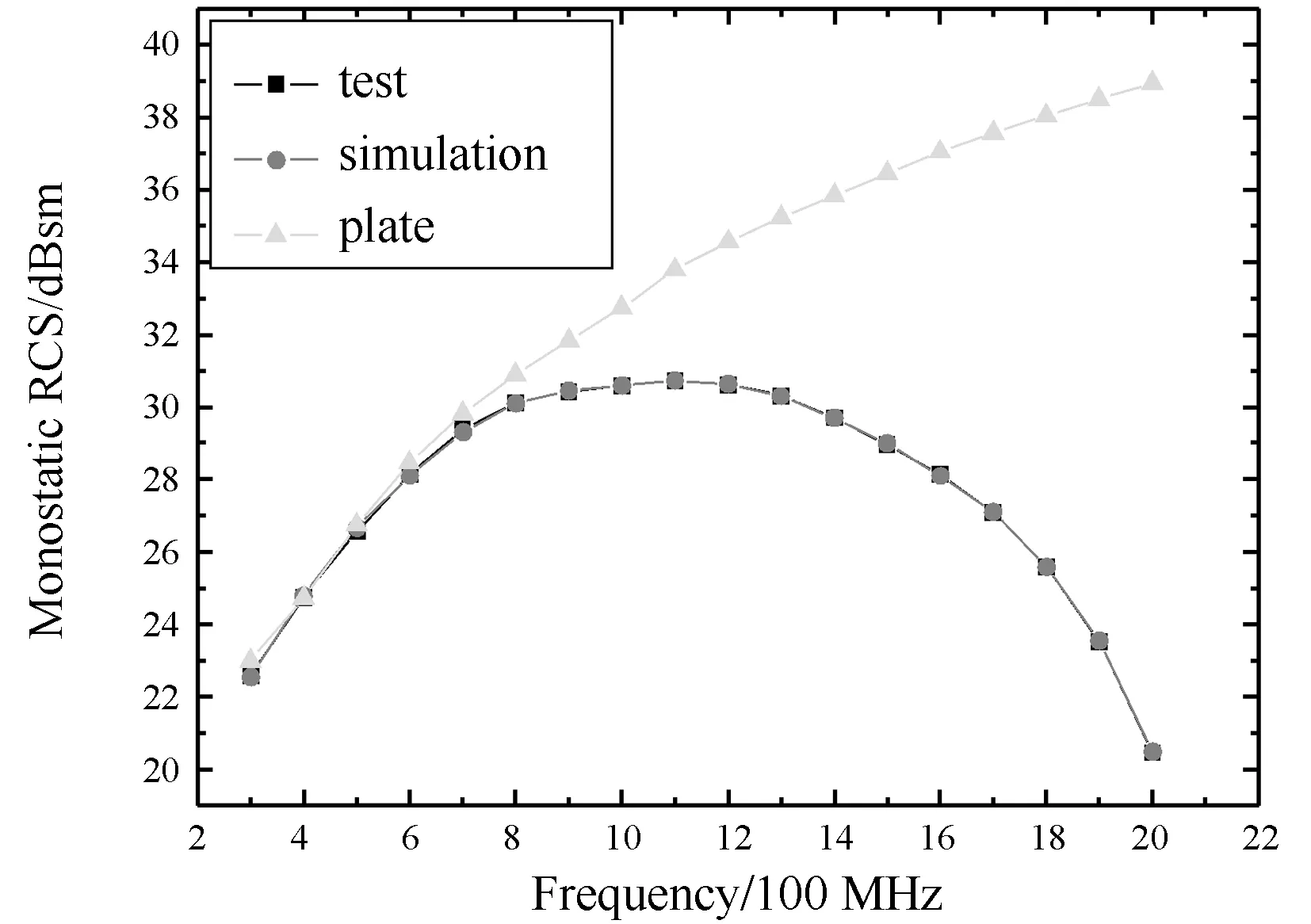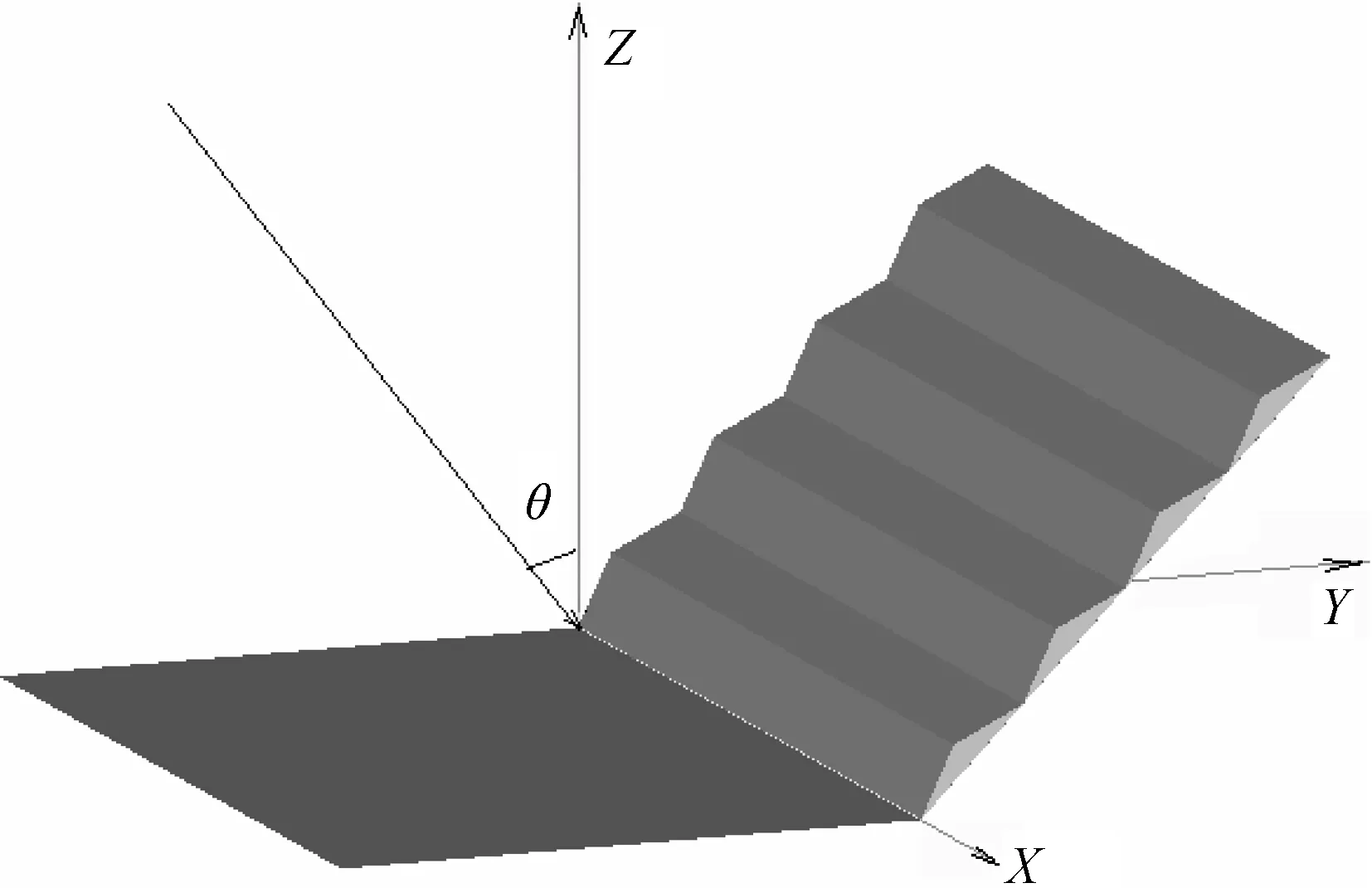Simulation of Radar Cross Section of a Sort of Corrugated Screen
1 INTRODUCTION
The study of radar cross section (RCS) is of great importance as it is used in modeling many portions of ships and aircrafts. Recent research in RCS has focused on reducing the detect ability of targets. Studies for the elimination of backscattering and specular reflection were studied by many researchers[1,2]。For instance, M. R. Jones and W. C. Anderson have tested a sort of corrugated screen which could reduce the power of backscattering[3]。 However, it is impractical to analyze and optimize the entire structures of targets under test as many EM problem; this is especially true in iterative design practice. Therefore, it is the comparatively feasible way for us to simulate EM problem by using numerical methods. Moreover, among all kinds of numerical methods, the multilevel fast multipole algorithm (MLFMA) has been applied successfully to solve EM scattering from 3D electrically large objects as the fastest integral equation solver up to now. The numerical results for the RCS of some simple objects like the sphere, cube, and the NASA almond are reported in [4]、 [5] and [6]。
The purpose of this paper is to simulate the monostatic RCS of a sort of corrugated screen from UHF band to Ka band. Furthermore, according to different frequency range and requirement, we have shown the results of monostatic RCS of corrugated screen in order to obtain the general results. Finally, we will also discuss the monostatic RCS of a corrugated dihedral angel consisted of a square and a corrugated screen.
2 MLFMA FORMULATION
A.Review Stage
In this section, for the sake of simplicity, only electrical field integral equation (EFIE) for 3D conducting objects is considered. It is given by[7]:
(1)

(2)
It can be evaluated by fast multipole method (FMM) as followed:
(3)
And the scattering field can be expressed as followed:
(4)
Moreove, the formula of RCS can be written as[8]:
(5)
3 SIMULATION RESULTS
The basic geometry is shown in Fig. 1. Initially a 2.4 m×1.57 m corrugated screen was modeled using CAD. And the plane of incident is the ZY plane.

Fig.1 Corrugated screen profile
In the following figures, Fig.2 shows the normal monostatic RCS of the corrugated screen in the case of incidence frequencies of 300 MHz~2 GHz. The results given by the simulation and the experimentation[3]agree well in the entire range. In the meanwhile, compared to the equivalent plate, the RCS of the corrugated screen have a obvious reduction in a wide frequency range (from 700 MHz~2 GHz).

Fig.2 Normal RCS (simulation and test) of the corrugated screen compared to the equivalent plate across the 300 MHz~1 GHz frequency band for horizontal polarization
And the higher frequency is, the larger difference between the corrugated screen and plate is. However, it is not distinct when the frequency range is from 300~700 MHz.
In the above, the scattering problem of corrugated screen was treated. When faces form dihedral angle, the RCS problem often has more practical value. Therefore, as some simple example, the monostatic RCS of a dihedral angle made up of a corrugated screen and square plate shown in Fig 3 is treated. Figure 4 shows the monostatic RCS of the dihedral angle in the case of incidence frequencies of 100 MHz~1 GHz with incident angle of 45°.

Fig.3 Dihedral angel consisted of a corrugated screen and a plate profile

Fig.4 RCS (simulation) of the dihedral angel consisted of a corrugated screen and a plate across the 400 MHz~1 GHz frequency band for horizontal polarization (incident angle is 90°)
Next, in order to investigate the relation between RCS and incident angle, we studied the different incident angle from 45°~ 90° and Fig.5 shown the results in the frequency 400 MHz. With the increase of incident angle, the RCS oscillates remarkably and irregularly. In fact, this irregular oscillation is due to the rimple of the corrugated screen.

Fig 5 Monostatic RCS (simulation) of the dihedral angel consisted of a corrugated screen and a plate across the 45°~90° angle band for horizontal polarization at 400MHz frequency
4 CONCLUSION
The simulation of RCS of a sort of corrugated screen has been presented. The results based on MLMFA show that the simulations are coincident with test. In the meanwhile, we obtained the RCS of a dihedral angel consisted of a corrugated screen and a plate. Obviously, these results are very useful for us to reduce the RCS of targets.
5 ACKNOWLEDGEMENT
The author would like to thanks Academician Lu Jian-xun and Profs Yi Xue-qin and Song Dong-an for their useful help and suggestions.
Reference
[1] WAGNER R L,CHEW W C. A study of wavelets for the solution of electromagnetic integral equations[J]. IEEE Trans. Antennas Propagat, 1995,43(8):802-810.
[2] CANNING F X. Solution of IML form of moment method problems in 5 iterations[J].Radio Sci.,1995,30(5):1371-1384.
[3] JONES M R,STAFFORD P,ANDERSON W C. Tenix panels: a solution to the problem of RCS reduction for ships in service[C]∥Proceedings of the International Radar Conference,2003.
[4] SONG J M,CHEW W C. Fast multipole method solution using parametric geometry[J]. Microwave Opt. Technol. Lett.,1994,7(16):760-765.
[5] SONG J M,CHEW W C.Fast multipole method solution of the combined field integral equation[G]∥11th Annu. Rev. Progress Appl. Computat. Electromagn.,Monterey, CA, 1995,(3):629-636.
[6] SONG J M,CHEW W C. Multilevel fast-multipole algorithm for solving combined field integral equations of electromagnetic scattering[J]. Microwave Opt. Technol. Lett.,1995,10(1):14-19.
[7] MICHIELSSEN E,BOAG A. Multilevel evaluation of electromagneticfields for the rapid solution of scattering problems[J]. Microwave Opt. Technol. Lett.,1994,7(17):790-795.
[8] JENN D C, Radar and laser cross section engineering[G]. AIAA, 1995.

